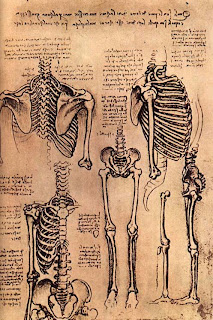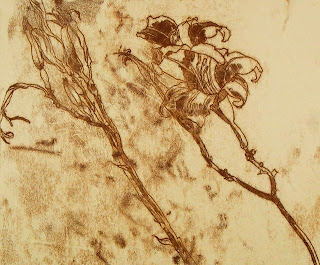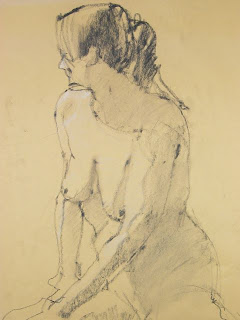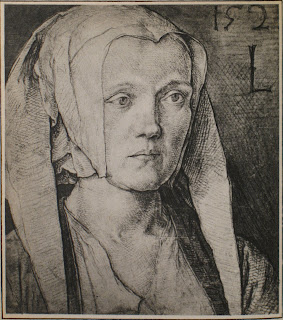
"Connoissuership" in drawing is developed by spending
time with great drawings. Or so I read, and suppose to be true.
That is a difficult thing to understand in art, that those who spend time with art somehow earn the right to evaluate them for the rest of us. More democratic is the feeling that all our perspectives are equally valid, and represent our different backgrounds- in other words, that it is totally subjective.
Even so, it is still a difficult thing to understand what it is that actually develops when we appreciate drawing, and why- what does the appreciation truly reflect? How can lines on paper have any qualities besides what we project onto them, and then, isn't it the projector that is being reflected? Is there such a thing as a great drawing, independent of humans? It doesn't seem like there would be.
In a vacuum- and with sufficient time but no "expert advice", how might a person's appreciation turn out different? We see this in history and in cultures, and we make the assumption that they are all seeking the same things, perhaps with different emphasis, but in the end, the same human search for meaning and expression is demonstrated.
That is as we would expect, because our thinking is that deep
human qualities are being expressed, not only cultural ones, but universal ones, though we are hard pressed to say what they are exactly. But why is it so difficult to know? Is it maybe because we are in fact just the security containers for genes, as Richard Dawkins suggests in
The Selfish Gene? And what is it that our genes want us to express, what is it that they want from art?
 There has been so much written about drawing, and how to draw, and what it means when we draw. I have shelves full of these books, and I thumb through them diligently, looking for some clue as to how to improve, or some easy insight. It's as if there may be a missing essential piece of information about drawing, that someone else has, or once had, and could be transferred by reading about it. As a child, like most drawers, I drew alot, and it wasn't necessary to know anything at all- so I can't say what would be different now. I compare it to handwriting, or signing your name. A signature is indelibly the signatory's, and only with great difficulty can it be changed, or, for that matter, copied. A drawing obviously has the same characteristics as a signature, and we certainly read much of the personality of a draftsman in sketches. It takes a Graphologist to interpret a signature, and perhaps not all that accurately. But it does not take a Graphologist too appreciate a signature, or a drawing.
There has been so much written about drawing, and how to draw, and what it means when we draw. I have shelves full of these books, and I thumb through them diligently, looking for some clue as to how to improve, or some easy insight. It's as if there may be a missing essential piece of information about drawing, that someone else has, or once had, and could be transferred by reading about it. As a child, like most drawers, I drew alot, and it wasn't necessary to know anything at all- so I can't say what would be different now. I compare it to handwriting, or signing your name. A signature is indelibly the signatory's, and only with great difficulty can it be changed, or, for that matter, copied. A drawing obviously has the same characteristics as a signature, and we certainly read much of the personality of a draftsman in sketches. It takes a Graphologist to interpret a signature, and perhaps not all that accurately. But it does not take a Graphologist too appreciate a signature, or a drawing.






